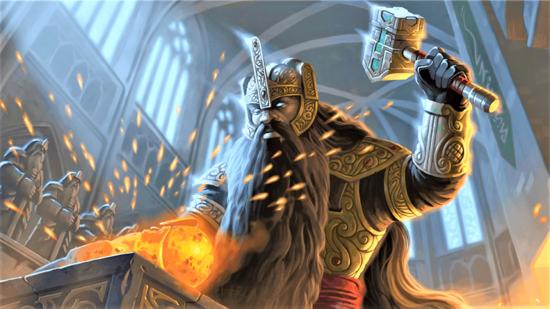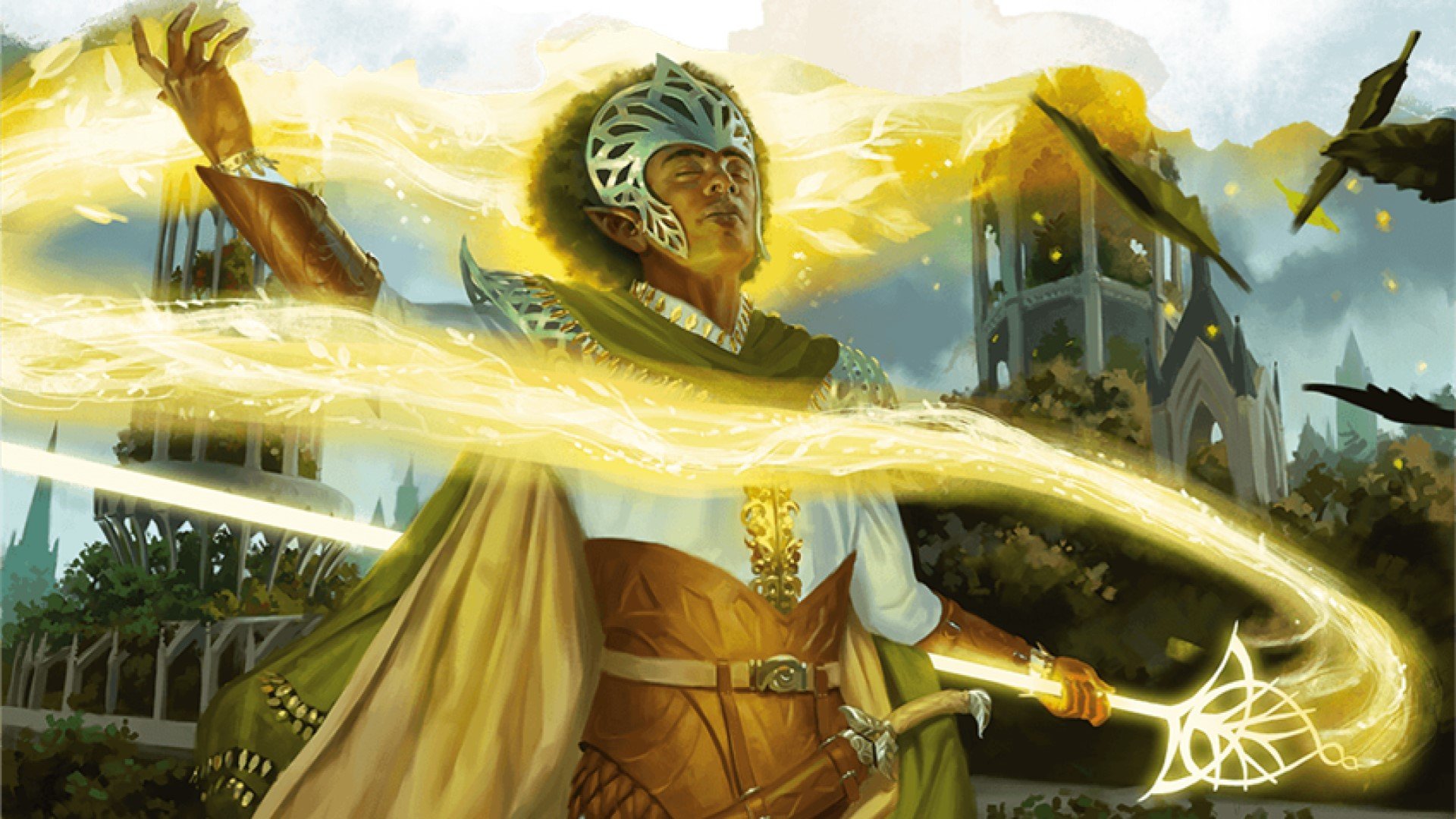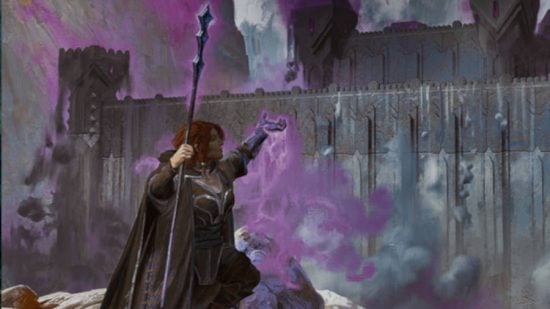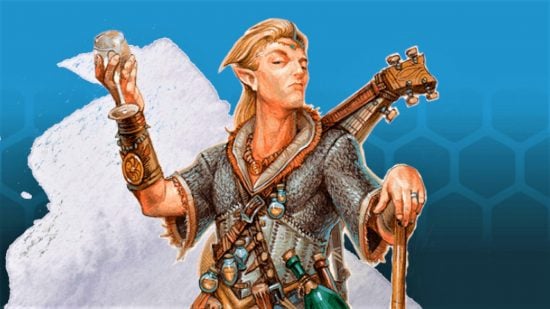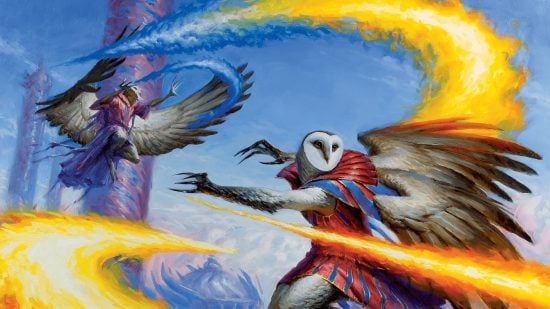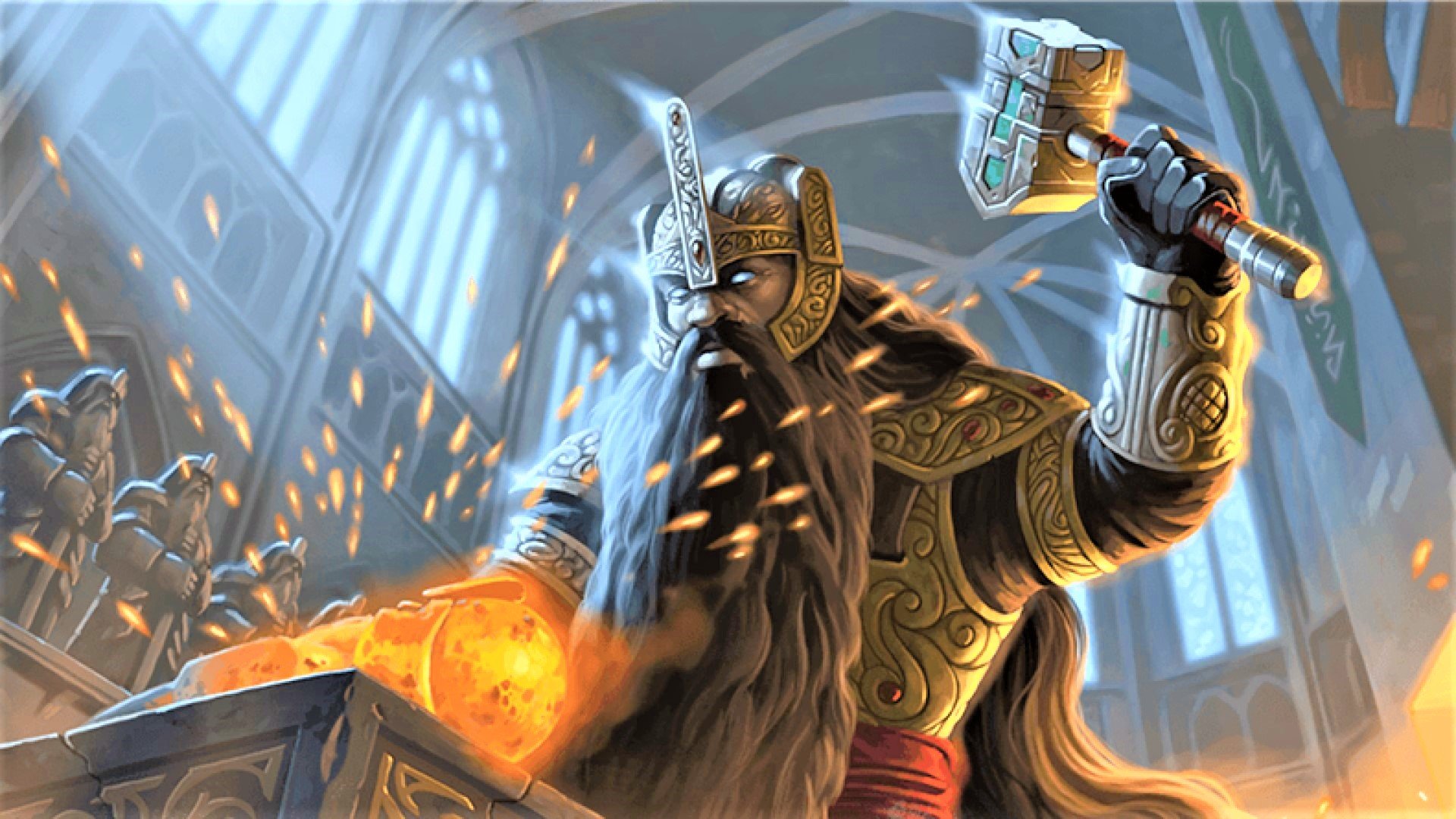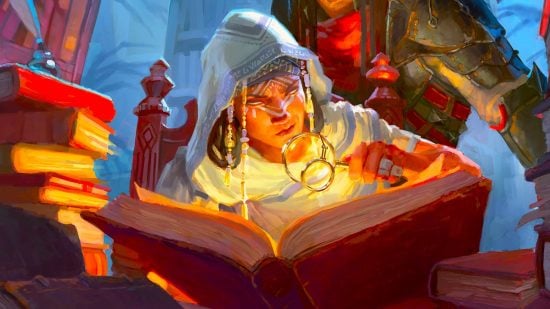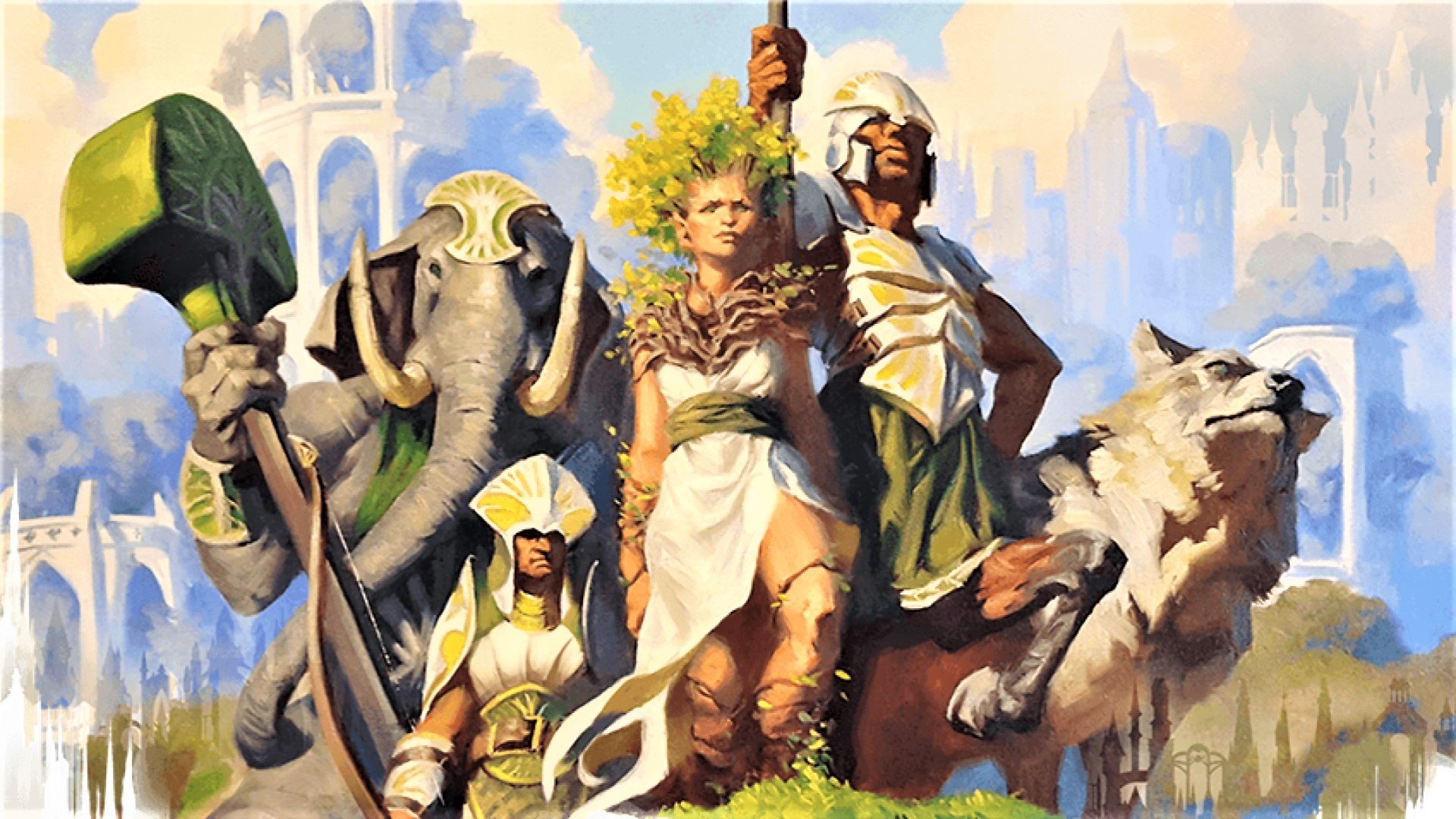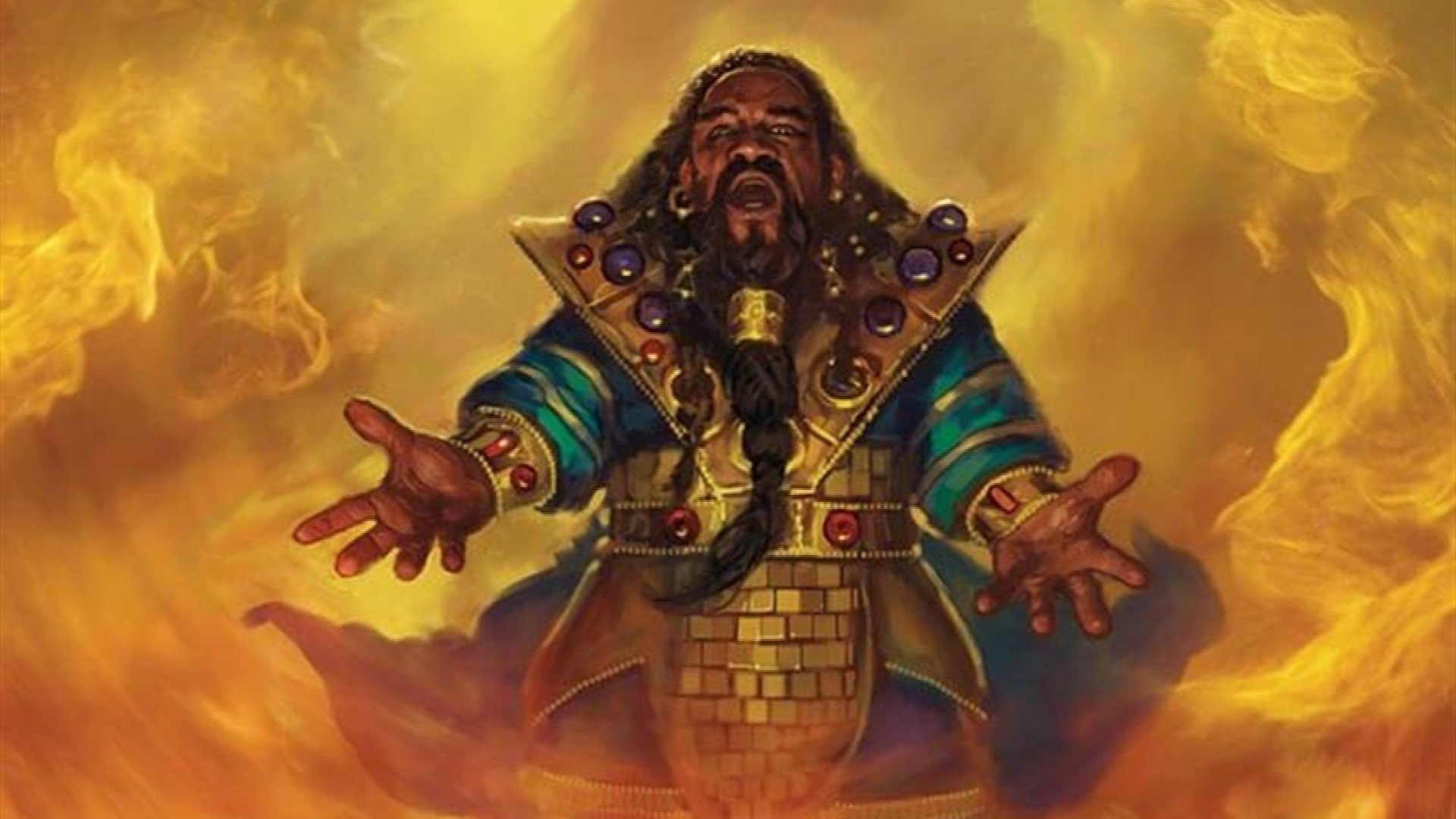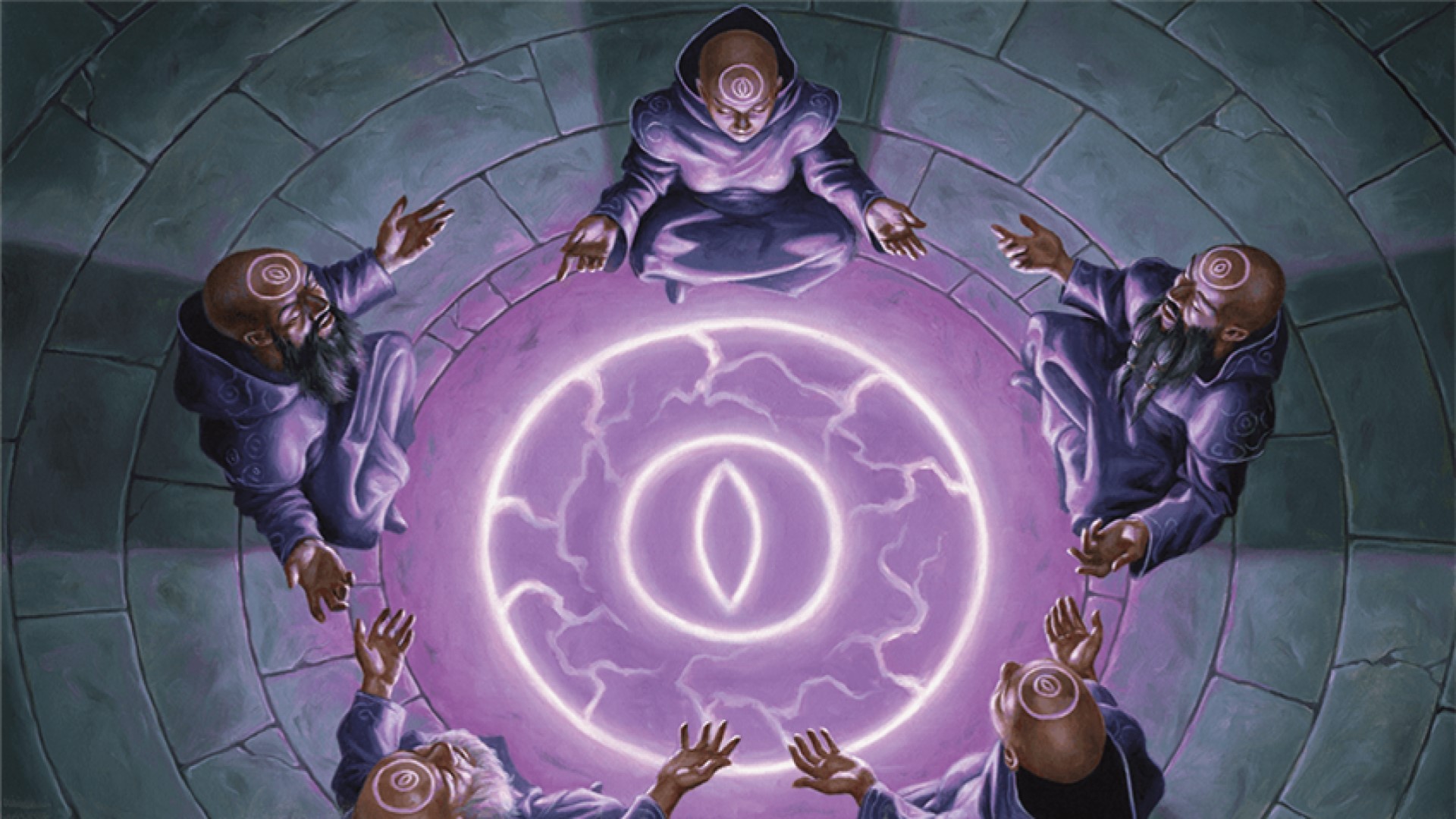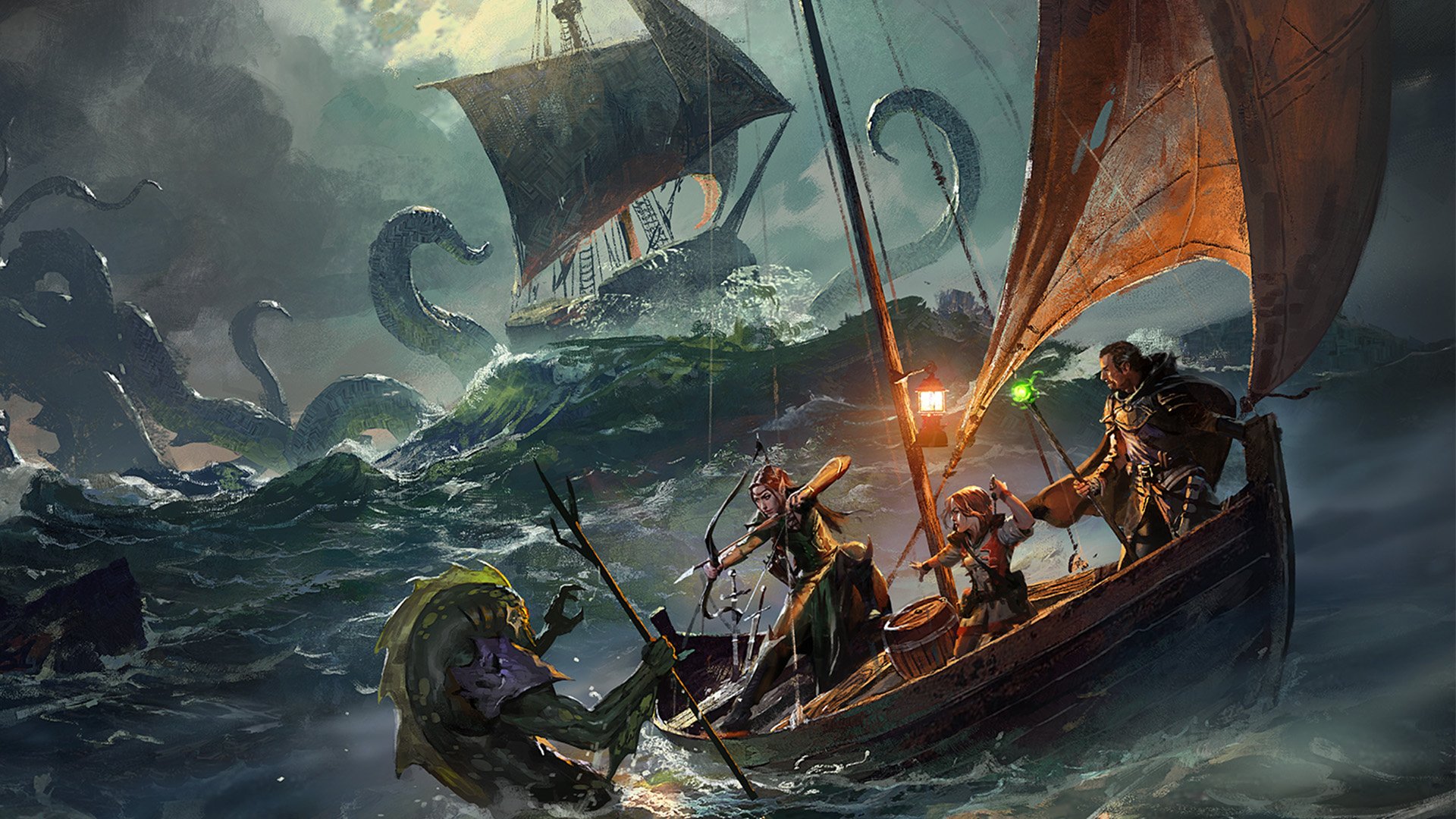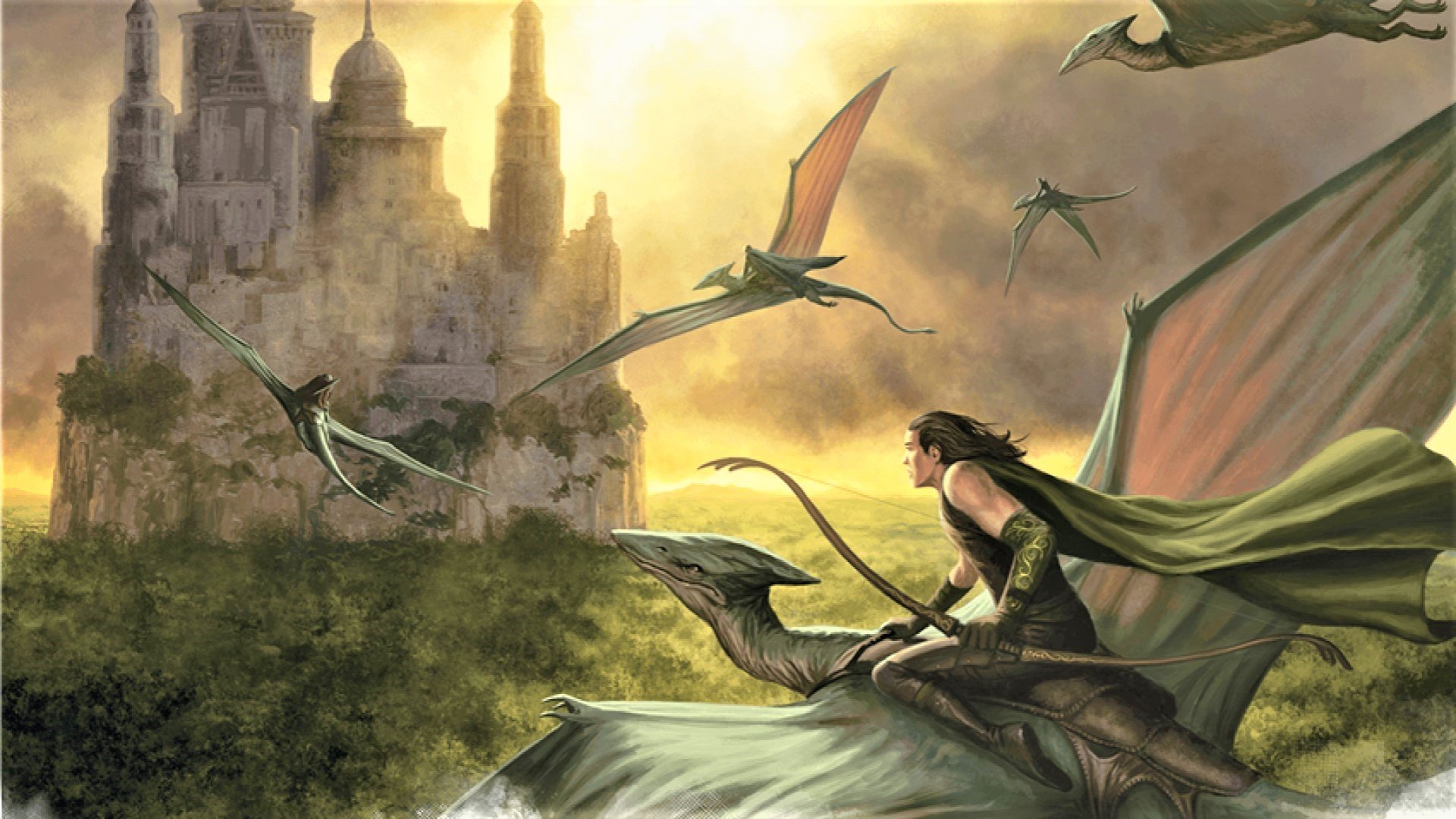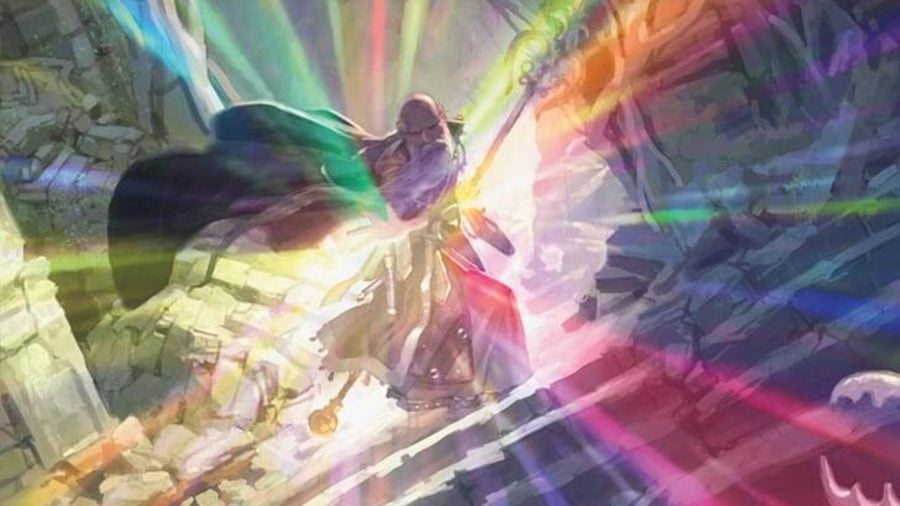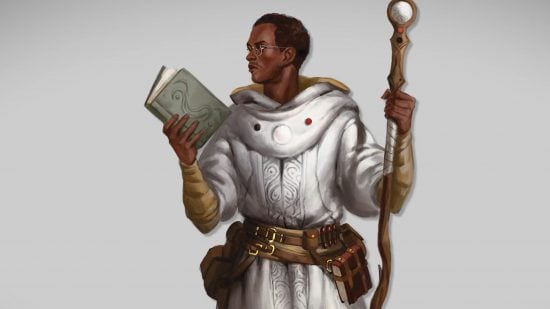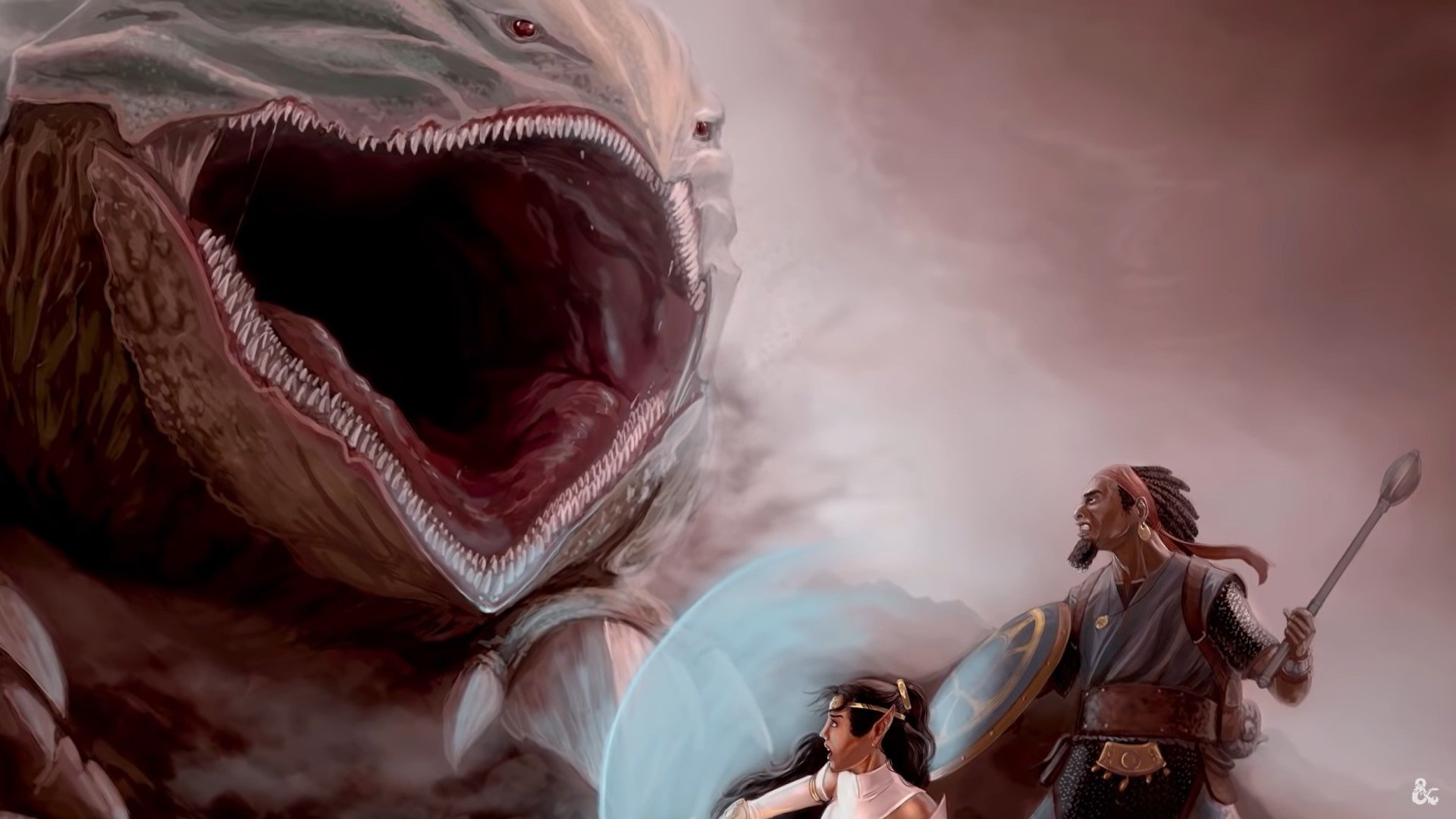The DnD Cleric 5e is one of the most powerful and streamlined classes in Dungeons and Dragons. Often pigeonholed as an ‘armored support’ character or discounted as a tiresome, holy goody-two-shoes, the 5e Cleric is actually one of the most versatile options adventurers can pick. After tasting that sweet power rush from smiting all the sinners, it’s a class you’ll struggle to let go of.
For a briefer overview of the DnD Cleric, alongside the other 13 class choices, check out our guide to all the DnD classes first. Or, for even more depth, our DnD Cleric spells guide can help you prep your DnD character build. To smooth out character creation, make sure to skim our guides to DnD races, DnD character sheets, and free online DnD character creator tools while you’re at it.
Ready to serve the DnD gods as a true penitent hero? Here’s what you need to know to roll a DnD Cleric 5e character:
- Cleric 5e stats
- Cleric domains 5e
- Cleric spells 5e
- Best race for Cleric 5e
- Cleric builds 5e
- One DnD Cleric
Cleric 5e stats
Here are the core Cleric 5e stats for your character:
| Hit dice | 1d8 per level |
| HP at lvl up | 1d8 (or 5) + Constitution modifier |
| Primary ability scores | Wisdom and Constitution |
| Armor proficiency | Light armor, medium armor, shield |
| Weapon proficiency | Simple weapons |
| Tool proficiency | None |
| Saving throws | Wisdom and Charisma |
Despite all the different subclasses and playstyles, all Clerics will follow the same basic rules. They’re primary spellcasters, so (and there is no arguing allowed here) maxing out their Wisdom (Wis) score is always going to be a top priority, as it’s their spellcasting ability.
Another point to remember when playing the class is that in 5e, DnD monsters deal damage faster than Clerics can heal. To keep themselves – and thus the party – alive, Clerics will want to raise their Constitution (Con) scores next, making sure they are sufficiently hard to take down, without having to turn to their spell list.
If your Wis and Con are high enough, melee-focused and damage-dealing Clerics can also look at raising their strength (Str), so they can bash enemies in the name of their gods more effectively. Besides these general tips, here are the rest of the class basics.
Note that the details in the table above can be expanded based on your Cleric’s subclass choice (e.g. Tempest Domain Clerics get proficiency in Heavy armor 5e and martial DnD weapons as well).
Cleric domains 5e
Thanks to Clerics being so divinely blessed and powerful as a class, there aren’t really any bad picks here. Subclass (or domain) choices generally come down to what party role you want to take on, or which flavor of roleplay that you’re after.
There are a staggering 14 Cleric domains 5e to choose from at level one, each offering different playstyles – making the Cleric one of the most diverse classes in the game (and, in general, ensuring no two Clerics are alike).
Life Cleric 5e
| Level | Subclass abilities |
| 1 | Disciple of Life, Bonus Proficiency, Domain Spells |
| 2 | Channel Divinity: Preserve Life |
| 6 | Blessed Healer |
| 8 | Divine Strike |
| 17 | Supreme Healing |
The classic healer, and the image that many people think of when they hear Cleric, the Life Cleric 5e is the only subclass where healing spells are economical to use frequently in 5e.
Clerics in this domain are worshipers of goodwill and life, dedicated to spreading positivity and assisting the wounded. They get extra points of healing on every healing spell they cast, making them a blessing to any party during combat.
But they aren’t merely a healing bot; with all the other base Cleric abilities, and their added proficiency in heavy armor, they can be hard hitters who deal plenty of damage, too. If you’re looking to roleplay as that traditional armored support character, this is the subclass to pick.
Here’s a full guide to the Life Cleric 5e subclass in case you want to learn more.
Tempest domain Cleric
| Level | Subclass abilities |
| 1 | Wrath of the Storm, Bonus Proficiencies, Domain Spells |
| 2 | Channel Divinity: Destructive Wrath |
| 6 | Thunderbolt Strike |
| 8 | Divine Strike |
| 17 | Stormborn |
Think of Thor or Zeus, the gods of the sea, skies, earthquakes, and storms; A Tempest domain Cleric walks the path of strength and justice, and delivers the wrath of their deities in style.
Tempest Clerics are intimidating damage dealers, and they can be terrifying on the battlefield. They get proficiency in heavy armor and martial weapons, and one of the best lists of offensive domain spells out of all Cleric subclasses.
Their Channel Divinity: Destructive Wrath also lets you deal maximum damage on lightning and thunder attacks, literally letting them obliterate their enemies with a holy storm.
Any tank players, or damage-dealing lovers, will thrive in this domain (and probably will soon become addicted to hurling destructive lightning bolts).
Death domain Cleric
| Level | Subclass abilities |
| 1 | Bonus Proficiency, Reaper, Domain Spells |
| 2 | Channel Divinity: Touch of Death |
| 6 | Inescapable Destruction |
| 8 | Divine Strike |
| 17 | Improved Reaper |
Now turning to the dark side, the Death domain gives your Cleric some necromantic qualities, letting you fiendishly bring about chaos and destruction. With their proficiency in martial weapons, Death domain Clerics can efficiently slay their enemies, reaping their souls as they go about on their murderous way.
However, remember to keep a shield handy on the front lines, as Death Clerics don’t get heavy armor proficiency. Their Channel Divinity: Touch of Death allows you to destroy your foe’s life force, and apply extra necrotic damage, with melee attacks.
It’s a highly thematic offensive subclass, but one you should properly consider in advance. Check what kind of campaign you’ll be going on before settling on your choice as, typically, Death Clerics’ necrotic and poison damage isn’t as effective as the radiant or force damage dealt by other subclasses in 5e.
Trickery domain 5e
| Level | Subclass abilities |
| 1 | Blessing of the Trickster, Domain Spells |
| 2 | Channel Divinity: Invoke Duplicity |
| 6 | Channel Divinity: Cloak of Shadows |
| 8 | Divine Strike |
| 17 | Improved Duplicity |
The Trickery domain 5e has what’s probably the most exciting domain spell list out of all the Cleric subclasses but, in practice, it’s also one of the toughest domains to play.
Worshiping the gods of scoundrels and mischief-makers, Trickery Domain Clerics prefer pranks and deception over violent confrontation.
Their Blessing of the Trickster ability grants advantage on stealth checks, and their Channel Divinity: Invoke Duplicity lets them create an illusion of themselves that casts spells against enemies.
There are tons of possibilities for battle tactics and roleplaying here, but It can be hard balancing the synergy of this subclass’s features and spells.
Grave Cleric 5e
(Xanathar’s Guide to Everything)
| Level | Subclass abilities |
| 1 | Circle of Morality, Eyes of the Grave, Domain Spells |
| 2 | Channel Divinity: Path of the Grave |
| 6 | Sentinel at Death’s Door |
| 8 | Potent Spellcasting |
| 17 | Keeper of Souls |
The peaceful version of the Death Domain, the Grave Cleric 5e worships gods of the afterlife. Spreading the influence of their deities, their mission is centered on honoring the departed and upholding the sacred passing between life and death itself.
This subclass is excellent for support. Their Circle of Morality feature brings fallen allies back into the fight, giving their party an advantage in tough combat scenarios. Similarly, Sentinel at Death’s Door lets Clerics aid allies by negating the DM’s critical rolls, saving your party from hairy fights.
For desperate combat situations, where everyone’s HP is abysmal, the Grave Domain has some of the best features – and can be the force that pushes the success of a dungeon.
Our Grave Cleric 5e guide can tell you about this subclass in more detail.
Light Cleric 5e
| Level | Subclass abilities |
| 1 | Bonus Cantrip, Warding Flare, Domain Spells |
| 2 | Channel Divinity: Radiance of the Dawn |
| 6 | Improved Flare |
| 8 | Potent Spellcasting |
| 17 | Corona of Light |
One of the game’s best ‘blasters’, the Light Cleric 5e brings fire and brimstone to the battlefield, as they worship the gods of radiance, fire and dawn, and set out to burn all evildoers at the stake.
Fire damage in 5e is already known for being ridiculously powerful, so having an offensive Cleric whose domain spells include the best fire damage attacks is pretty helpful. At level one, they get a bonus cantrip (Light) and Warding Flare, which lets you apply disadvantage to enemy attacks.
Their Channel Divinity: Radiance of the Dawn is also terrifying for DMs as it delivers a wave of radiant flames to attack multiple enemies.
The light domain is a damage-dealer’s dream, deservedly known as one of the most powerful and fun offensive Cleric subclasses you can play.
Order domain 5e
(Guildmaster’s Guide to Ravnica)
| Level | Subclass abilities |
| 1 | Voice of Authority, Bonus Proficiencies, Domain Spells |
| 2 | Channel Divinity: Order’s Demand |
| 6 | Embodiment of Law |
| 8 | Divine Strike |
| 17 | Order’s Wrath |
Clerics of the Order domain 5e have firm devotion to the laws that govern their society, focusing on discipline, justice, and smiting those who break the community’s rules.
They get proficiency in heavy armor and a bonus proficiency in either intimidation or persuasion. Their Channel Divinity: Order’s Demand, also gives extra psychic damage to weapon attacks, and they’re easily one of the most potent hitters out of all the subclasses.
Order Clerics are the voice of authority for a party and offer tons of support, while also destroying enemies with a single blow. However, to truly get the most out of the subclass, you’ll need to use teamwork – so keep that in mind before you set out on your adventure.
Arcana domain 5e
(Sword Coast Adventurer’s Guide)
| Level | Subclass abilities |
| 1 | Arcane Initiate, Domain spells |
| 2 | Channel Divinity: Arcane Abjuration |
| 6 | Spell Breaker |
| 8 | Potent Spellcasting |
| 17 | Arcane Mastery |
The spell-slinging and magical-centered choice, the Arcana domain 5e is perfect for any players that want a DnD Wizard-slash-Cleric crossover style of gameplay.
Worshiping the gods of magic, Arcana Clerics get access to some great spells on their domain list, such as Magic Missile, at level one, and Arcana Eye, at level seven.
At level 17, their capstone ability gives them the choice to add four wizard spells, which are always prepared and ready to use.
This can be a game-changer when carefully considered (we recommend always adding the spell Wish to your list), but until you get to that level, Arcana Clerics do require tactical thinking and can be a tricky subclass to play – so be warned.
Forge Cleric 5e
(Xanathar’s Guide to Everything)
| Level | Subclass abilities |
| 1 | Bonus proficiencies, Blessing of the forge, Domain Spells |
| 2 | Channel Divinity: Artisan’s Blessing |
| 6 | Soul of the Forge |
| 8 | Divine Strike |
| 17 | Saint of Forge and Fire |
If you’re playing a Dwarven Cleric, the Forge Cleric 5e is the perfect subclass. Worshiping the gods of material, the forge, and metal-smelting artisans, the Forge Domain is full of pride, and unique spells that tank-inclined players will love.
They get heavy armor proficiency, and, at level one, can craft either a +1 magical weapon or +1 magical armor. Getting a bonus to your AC immediately is pretty amazing, and, at level 17, getting immunity to fire makes you even tougher to take down.
Their Channel Divinity: Artisan’s Blessing lets them craft trinkets that can be incredibly useful in several ways during a campaign. Honestly, they are just such a fun and creative subclass (in and out of combat) that it’s impossible not to love them.
Learn more about the Forge Cleric 5e in our dedicated guide.
Knowledge domain 5e
| Level | Subclass abilities |
| 1 | Blessings of Knowledge, Domain Spells |
| 2 | Channel Divinity: Knowledge of the Ages |
| 6 | Channel Divinity: Read Thoughts |
| 8 | Potent Spellcasting |
| 17 | Visions of the Past |
Clerics of the Knowledge domain 5e can provide tons of utility to a party, as they set out to unlock the secrets of the universe.
Their domain spell list has a few divination spells, with a couple of standouts. Still, overall, players will probably be relying on the base features of the Cleric class here, especially when facing enemies.
Their Channel Divinity: Knowledge of the Ages lets you gain proficiency in a skill or tool (perfect for picking some locks without a rogue) and gives plenty of opportunities to assist your party outside of combat.
But it’s important to think about your playstyle before you pick this subclass. Remember, the Knowledge Domain is very situational, and more of a roleplaying choice than an optimized combat option.
War Cleric 5e
| Level | Subclass abilities |
| 1 | War Priest, Bonus Proficiencies, Domain Spells |
| 2 | Channel Divinity: Guided Strike |
| 6 | Channel Divinity: War God’s Blessing |
| 8 | Divine Strike |
| 17 | Avatar of Battle |
More of the bashing-enemies-to-a-pulp kind of Cleric, members of the War Cleric 5e subclass are at the frontlines, as an unstoppable armored force of holy power.
Sharing some spells with the Paladin class, their domain spells are designed for aggressive playstyles, and their Channel Divinity: Guided Strike gives them a +10 to their attack rolls.
They get proficiency in heavy armor and martial weapons, and they can use their bonus action for an extra attack. You’ll undeniably feel powerful playing an agent for the gods of war, especially during lower levels.
But you will want to focus on raising your Str score here, and will be juggling your bonus action uses (especially if you use Spiritual Weapon), so think tactically, and do your gods proud by playing smart offensives during combat.
Nature domain 5e
| Level | Subclass abilities |
| 1 | Acolyte of Nature, Bonus Proficiency, Domain Spells |
| 2 | Channel Divinity: Charm Animals and Plants |
| 6 | Dampen Elements |
| 8 | Divine Strike |
| 17 | Master of Nature |
Nature domain 5e Clerics are spellcasters who are one with their surroundings and can fully use the environment to their advantage.
Having lots of Druid elements to their subclass features and domain spell list, they get some amazing abilities that can benefit the party in the right scenarios. Acolyte of Nature gives them a Druid cantrip of their choice, and proficiency in the Animal Handling, Survival or Nature skill.
They also get heavy armor proficiency, and their Dampen the Elements ability grants resistance from elemental damage, offering massive benefits to themselves and allies during combat.
However, like the Knowledge Domain, it’s a situational subclass. If your campaign isn’t in the wilderness, most abilities will be lackluster, and you’ll end up relying on base Cleric features more than other domain choices.
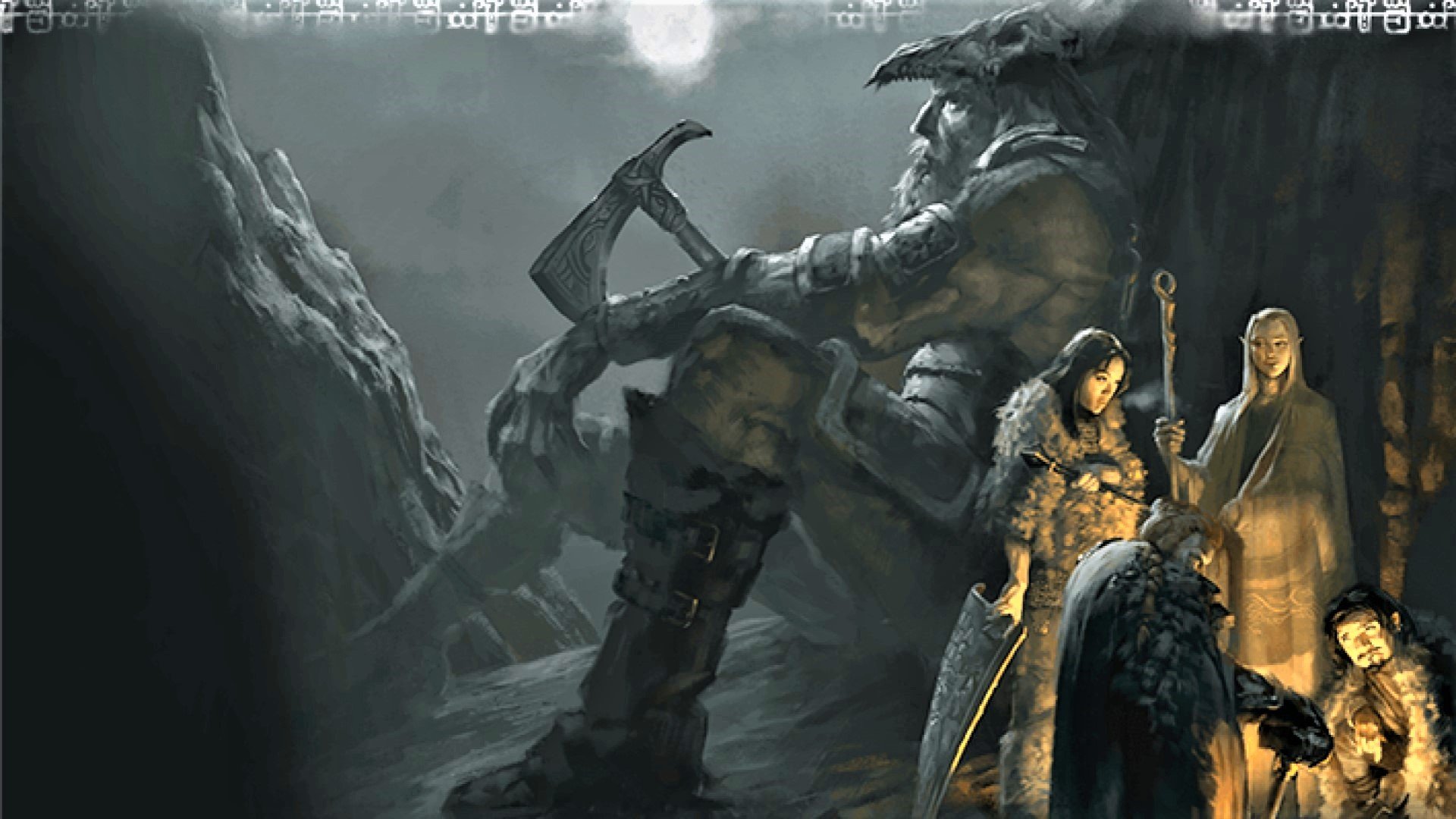
Peace Cleric 5e
(Tasha’s Cauldron of Everything)
| Level | Subclass abilities |
| 1 | Implement of Peace, Emboldening Bond, Domain Spells |
| 2 | Channel Divinity: Balm of Peace |
| 6 | Protective Bond |
| 8 | Potent Spellcasting |
| 17 | Expansive Bond |
No matter what anyone says, peace is always an option, and it’s time to destroy everyone who says differently. Joining the Peace Cleric 5e subclass literally benefits the entire party, offering support features beyond basic healing, and amplifying the benefits of teamwork during combat.
Starting at level one, Emboldening Bond lets them bond with allies and give them a d4 bonus to their attack rolls, saving throws or ability checks.
Their Channel Divinity: Balm of Peace also lets them essentially dash around the battlefield, granting temporary hit points equal to 2d6 plus their Wis modifier to any nearby allies.
Peace Clerics are an excellent domain for bonding an adventuring party together, and they can be the glue responsible for holding up your adventuring and combat success.
Twilight Cleric 5e
(Tasha’s Cauldron of Everything)
| Level | Subclass abilities |
| 1 | Eyes of the Night, Vigilant Blessings, Bonus Proficiencies, Domain Spells |
| 2 | Channel Divinity: Twilight Sanctuary |
| 6 | Steps of Night |
| 8 | Divine Strike |
| 17 | Twilight Shroud |
A great pick for defensive and utility-focused players, a Twilight Cleric 5e worships the gods that guard against the horrors of the night, and they can aid any allies in the front lines.
They get proficiency in heavy armor and martial weapons, and a spell list with both Wizard and Druid class-like features, letting you truly embrace the mystical role of a spellcasting shadow priest.
Many of the domain spells in this subclass offer buffs, and their Channel Divinity: Twilight Sanctuary can grant either temporary hit points or clear harmful effects (e.g. charmed), making them one of the most appreciated players on the battlefield. If you want to be the party protector, and a Cleric shrouded in mystery, this is the domain for you.
Cleric spells 5e
Cleric spells 5e are the quintessential tools to ensure a party’s survival. However, on top of having stellar healing and support picks, they can also crush your foes, granting abilities like casting down divine flames from the heavens, or summoning spiritual guardians to embody your deities’ wrath.
On top of having one of the largest spell lists in the entire game, Clerics are also one of the easiest spellcasters to play in general. There are tons of choices for Cleric spells, and to go through them, plus all the domain spells, would take a century. So we’ve listed the absolute must-haves that no Cleric should go without.
Cantrips
- Guidance: Great for outside combat. This spell lets any of your allies have a better chance of passing checks while adventuring. Once you touch them, willing participants get a d4 bonus to add to any ability check.
- Sacred Flame: The best damage-dealing cantrip, and a Light Cleric staple; this deals a wave of radiance against enemies. Targets must make a Dex saving throw or take 1d8 radiant damage; however, this can increase up to 4d8 damage at higher levels.
Level one
- Bless: A must-have (especially in the early game) Bless can significantly increase your party’s damage output. Choosing up to three allies, they’ll get to roll a d4 to add to their attack rolls or saving throws.
- Healing Word: An excellent healing spell. In-range allies will regain 1d4 + your spellcasting ability modifier of hit points. It’s also a bonus action, meaning that you can heal your party while also causing damage to enemies, in a single turn.
- Guiding Bolt: One of the best damage spells against a single target. Enemies take 4d6 radiant damage. If your bolt didn’t make the cut and somehow didn’t kill them, the next attack roll gets advantage, so either way, they’re gonna end up dead.
- Sanctuary: At lower levels, lots of your party will be squishy, so Sanctuary is a good protection buff to have in your arsenal. You ward enemies against attacking the spell’s target character; if any enemies do roll to attack them, they must pass a Wis saving throw first.
Level two
- Spiritual Weapon: One of the best abilities in the entire game, period. A floating weapon of your imaginative choice deals 1d8 + your spellcasting modifier of force damage. As a bonus action, it can move up to 20 feet, and repeat the attack on an in-range enemy. The increase in damage output is fantastic, and the possibility of conjuring up fun weapons like sacred flying lollipops or holy rubber chickens on the battlefield is simply too good to pass up.
- Enhanced Ability: Offers a broad range of useful buffs to assist in checks for any willing creature you touch; this spell is super versatile in and out of combat and can make life a whole lot easier.
- Silence: A must-have for any adventuring party. As most spellcasters require a verbal component to their attacks, it’s a great way to block damage.
- Prayer of Healing: You can heal up to six in-range allies, letting them regain 2d8+ your spellcasting modifier. The ability to heal multiple allies at once is an obvious stand-out ability in combat.
Level three
- Spirit Guardians: Summoning a spirit to protect you; this acts as a great buff while decreasing enemy melee attackers’ efficiency. Enemies affected by your summon will have their speed halved, and have to make a wisdom saving throw or take 3d8 radiant/necrotic damage.
- Revivify: One of the spells that all Clerics are expected to pick up. It’s a straightforward spell that lets you raise fallen allies and is considerably less costly than other similar abilities like Raise the Dead.
- Dispel Magic 5e: Basically, you can stop enemy spells in their tracks, which is obviously extremely useful, and makes enemy casters essentially easy targets.
- Bestow Curse: Once you touch a creature, they must succeed on a Wisdom saving throw or be cursed. You get to pick one of four curses, and it’s a great way to make sure your party achieves the upper hand during your adventure.
Level four
- Banishment: This allows you to send an enemy to another plane of existence. Your target must succeed a Charisma saving throw or be banished from the battlefield. As enemies generally don’t have high Charisma, it’s a super-effective tool to have in your Cleric’s tool-belt.
- Death Ward: The perfect solution for protecting more vulnerable allies, like Wizards, in your campaign. The spell lasts for eight hours and literally prevents death, so, like Revivify, it’s a pretty handy spell to have, especially during those tough boss fights.
- Stone Shape: Stone is a pretty common material in dungeons, and having the ability to reshape it is incredibly powerful. It offers tons of creative and useful possibilities, such as altering the terrain to your party’s advantage in combat.
Level five
- Flame Strike: Another staple damage-dealing pick if you aren’t a Light Cleric (and thus don’t have easy access to fire spells), Flame Strike lets you cast divine fire from the heavens.
- Commune: Being able to contact your deity is an obvious Cleric pick. You can ask up to three questions to your god and receive yes-or-no answers in return. It’s fun to get your DM more involved with your class, and you can learn some valuable information (if you ask the right questions).
- Greater Restoration: This ability heals a great number of effects that can put your teammates at a disadvantage in battle. The ability to cancel any crippling buffs can turn the tides in your favor during combat, making this a spell that every Cleric should have prepared – just in case.
Level six
- Heal: A powerful healing spell that doesn’t require any rolls. It lets your target regain 70 hit points and ends any blindness or disease buffs that may be affecting them. It can be a lifesaver in combat, and it’s one of the most reliable healing spells you can have on your list.
- Word of Recall: This lets you teleport you and your party out of harm’s way. If you’re a big adventuring party, you may have to leave some pets behind – but when things are going south, and you have no chance of survival, this escape plan is a blessed safety net.
Level seven
- Divine Word: Uttering a divine word allows for some top-notch crowd control on the battlefield. Chosen creatures in range will have to make a Charisma saving throw or take a certain amount of damage and negative buffs, based on their current hit points.
- Plane Shift: This allows you to get rid of creatures permanently – or lets you and your party travel all over the multi-faceted planes of existence. Both in and out of combat, it’s a spell you’ll use frequently.
- Regenerate: Although severed limbs are hard to come by in 5e, it’s always lovely to have the ability to grow back some fingers or legs. Regenerate restores your target’s body, and can also be used in combat to have allies regain 4d8+ 15 hit points.
Level eight
- Holy Aura: An incredible defensive buff for all your combat needs; Holy Aura gives you and your party advantage on saving throws and places enemies’ attacks at a disadvantage until the spell ends. There is also the potential of blinding undead enemies, which is always a welcome bonus.
- Antimagic Field: Creating an invisible, magic-cancelling sphere around you, enemy spellcasters are gonna hate your divine guts. No spells can be cast within the sphere, summons will disappear, and magical items become useless. When you’re close to a spellcaster that literally can’t fight back, it’s pretty much game over with one good melee attack.
Level nine
- Mass Heal: The mother of all heal spells, this is a high-level Cleric’s bread and butter. Mass Heal lets you and your allies regain 700 hit points. That’s going to be enough to heal most high-level characters fully, and it can make your DM cry as they watch you leave hardcore boss fights unscathed.
Best race for Cleric 5e
Most races will excel as a Cleric as long as they have a decent Wis score – but if you are looking to choose the best race for Cleric 5e right off the bat, you’ll want to pick a race that will max out your ability scores as quickly as possible.
Choices that give you bonuses in Wis are the best to help with all your Cleric spellcasting needs. However, any choices offering increases in your other two ability scores as well (Str + Con) really do sweeten the deal.
Hill Dwarf
A DnD Dwarf is super tough with its +2 Con, and, really, what is better or more helpful than a healer who’s hard to take down? Hill Dwarves are incredibly durable, and get a +1 to Wis, making their spellcasting ability score better, too. With all the right bonuses in all the right places, and a race feature that grants you continuous hit points, it seems the Hill Dwarf was built specifically for a Cleric.
Wood Elf
While a Dex-focused race may not be a great pick at first glance, Wood Elves are the exception. Along with their +2 to Dex, they get +1 to Wis and an extra weapon proficiency. If you want to play as a light armored, finesse weapon-using Cleric, this subrace for the DnD Elf is going to be your best bet.
Variant Human
With a Variant Human 5e, you can give a +1 to your Wis and Con scores and pick a feat. If you pick the right feat, you can get even more wisdom bonuses, making your spellcasting super-effective, even at the lowest of levels. Variant humans also thematically can fit into any of the Cleric subclasses, making them not only a fast ticket to extreme holy power, but also a roleplaying dream.
Half-Elf
A Half-Elf 5e get a +2 to Cha and a +1 that Clerics can put into their Wis ability score. The Cha score is helpful for specific Cleric domains’ roleplaying options (e.g. the Trickery domain), and their additional stat increase – which can, of course, go into Wis – is super appealing, to say the least. Half-Elves, like all Elves, also have Darkvision, letting them see even in the darkest of dungeons – which is always incredibly useful for any campaign.
Cleric builds 5e
The Cleric is a very flexible class, and it’s easy to be powerful no matter what decisions you make. However, if you’re looking for a few quick, tried and tested Cleric builds 5e, we’ve listed three for all your spellcasting convenience.
Hill Dwarf Forge Tank
The tank build to end all Cleric tank builds; the Dwarven Forge Cleric is the go-to for any players who enjoy defensive playstyles and absorbing damage for the party.
With all the bonuses to your AC, paired with the solid support, utility, and healing spells, here is one of the best thematic and optimized Cleric powerhouses you can play as.
Ability scores
As a spellcaster, Wis is always the top concern, so focus on maximizing this first. Your Con, then followed by your Str, should be your next scores to look at, as these are the typical tank essentials.
Details
Choose the Hill Dwarf race. This will give you a +2 to your Con and a +1 to your Wis. They also get the Dwarven Toughness feature, giving a +1 to their maximum hit points every time you level up. With this, you are already beefy, and it’s a great starting point in your quest for invincibility.
At level one, pick the Forge Domain; this will give you bonus proficiencies and Blessing of the Forge. With the Blessing of the Forge ability, craft magical armor. This will give you a +1 to your AC, making you hard to take down, and just hard to hit in general.
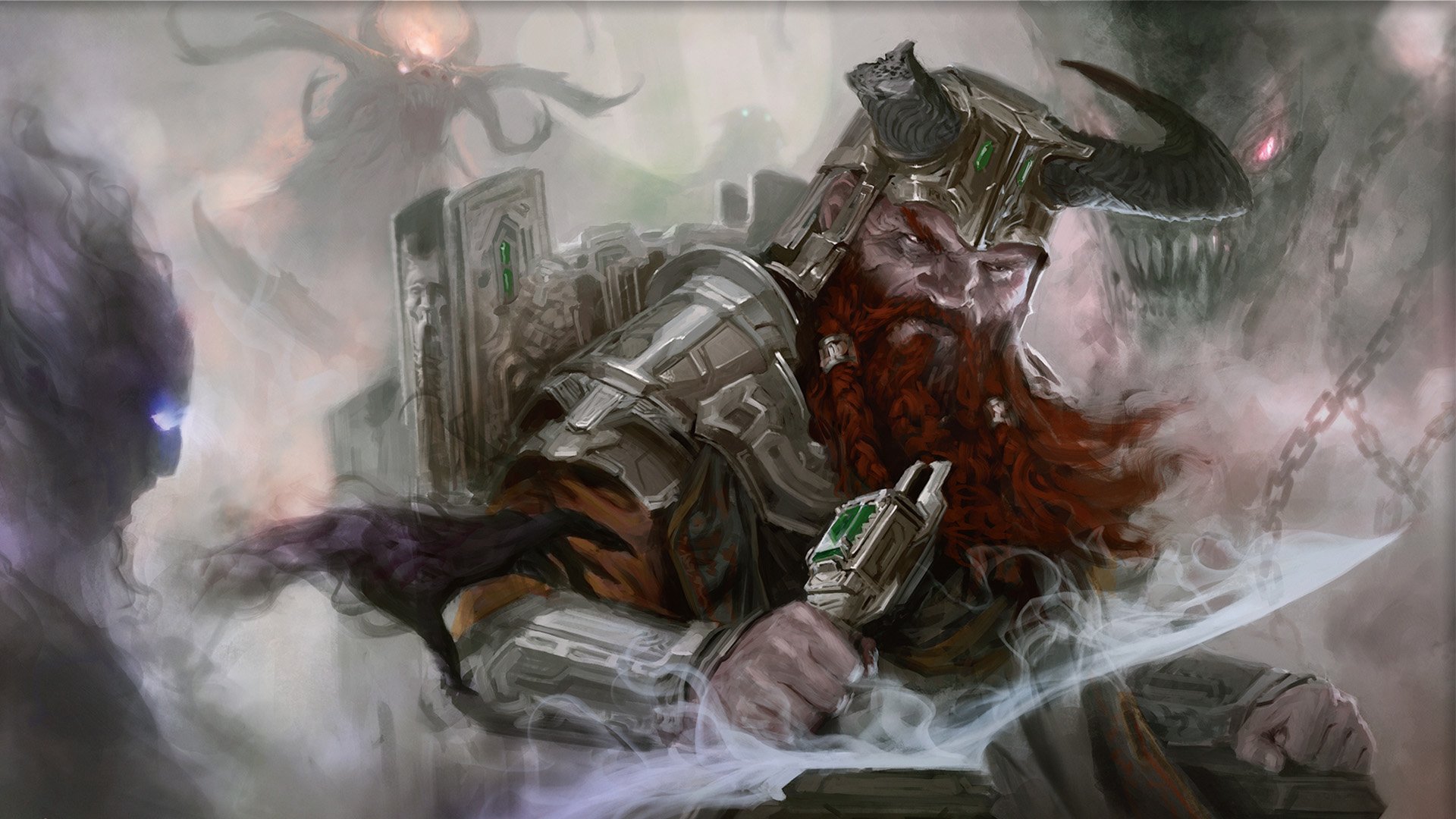
Thanks to the Domain bonuses, you will now have proficiency in heavy armor, so choose chain mail, giving you a 16 AC. Because you also get proficiency in martial weapons, pick a Warhammer, giving you 1d8 bludgeoning damage.
As you level up, you will get a variety of spells to pick from, and a general rule for Forge Clerics is to stick to your domain list, as it’s designed for the tank/support playstyle anyway. Heat Metal and Wall of Fire are two must-haves. Besides those, add the essential spells that we discussed previously.
At level four, take the War Caster feat instead of raising your ability scores. This will give you an advantage on Con saving throws, and it can be a real lifesaver in combat. It’s also a must-have for spellcasters in general, and we recommend it for any Cleric.
Level eight is where you’ll want to add to your Wis score and max it out if you can. If your Wis score is high enough, take the resilient feat instead, which gives you a further bonus to your Con score.
From here, you should be sporting a crazy amount of hit points and dealing scary amounts of damage. The build is pretty much sorted by following these steps – but don’t be afraid to be flexible. Remember that, when in doubt, you can swap out spells every time you level up, so have fun experimenting as well.
Wood Elf Life Archer
Players that prefer a ranged style of combat often overlook Clerics as a class, but luckily the gods have answered their prayers with this build. Wood Elves, with their affinity for nature, bring tons of roleplaying possibilities to the classic Life Domain, while letting you try your hand at a ranged Cleric, healing your party while smiting enemies from afar.
Ability scores
Like always, Wis is the top pick to focus on, closely followed by Con. However, unlike most Clerics who focus on Strength, players will want to raise their Dex scores here, so they can shoot from the back lines efficiently.
Details
Pick the Wood Elf race. This will give you a +1 to your Wis and a +2 to your Dex. You will also get Elf Weapon Training, giving you proficiency in longbows and other finesse weapons. The race also increases your speed, and gives you the ability to hide in your surroundings, making you hard to catch as you go about healing all your party’s damage dealers and melee warriors.
At level one, pick the Life Domain; this will give you Disciple of Life, which makes your healing spells more effective straight away.
Due to your race choice, you can now pick a longbow for a weapon, giving you 1d8 piercing damage. For armor, stick to light armor. However, if you’re desperate and decide to push it up to medium armor, make sure your option doesn’t put you at a disadvantage with stealth. Remember, you’re going to be a Cleric who evades attacks, not a tank who soaks them up.
As you level up, focus on support and healing spells, looking at your domain list for a general guide on how to go about finalizing your picks. The offensive spells you should pick up as you go along are Guiding Bolt, Spiritual Weapon, and Guardian of Faith.
At level four, you’ll want to pick up the Elven Accuracy feat to maximize all your attack rolls. It will also give you a bonus to your Wis score. So now you’re an evasive Cleric that never misses, and shoots to kill.
At level eight, raise your Con score. It’s always good not to be so squishy, and even ranged players should focus on increasing their hit points.
A Wood Elf Life Cleric is a great roleplaying option, but requires smart combat gameplay. By following these steps, the basics are in place for you to be a great Cleric. But it’s up to your tactical plays to truly make this build shine. Focus on using the terrain to your advantage, and using teamwork whenever you’re on the battlefield.
Variant Human Light Blaster
Human Variant’s extra starting feat can make the Light Cleric a terrifying damage dealer from level one, as they brutally cleanse the battlefield with waves of deadly radiant flames. If you like to destroy areas of enemies in one go and are OK with turning the world to ash, this is the build for you.
Ability scores
Surprise, surprise, it’s Wis again. Focus on that first and foremost. Next, since Light Clerics don’t have proficiency in heavy armor, raise your Con or Dex scores to make sure it isn’t easy to hit you or take you down. Being able to deal damage means nothing if you can’t take even one punch without keeling over backwards before you’ve chanted your first spell.
Details
Pick the Variant Human for your race, and place the ability score bonus into your Wis and Con scores. For your free feat, pick up War Caster, which gives you advantage on Con saving throws. It also lets you cast a spell as your reaction for opportunity attacks, increasing your damage output overall. For Light Clerics, this is going to make you downright scary to any enemies.
At level one, pick the Light Domain. This will give you the bonus cantrip Light (which is super useful when dungeon diving) and Warding Flare, which lets you impose a disadvantage on an attack roll against you.
Since you won’t have proficiency in heavy armor or heavy weapons, your armor choice will be scale mail, and you’ll want to choose a one-handed weapon so that you can also take a shield with you into battle.
For offensive spells, it’s pretty safe to stick to the domain list, while also throwing in Spiritual Weapon and Spirit Guardians. Don’t neglect healing and support spells, though, and always remember Banishment, Revivify and Healing Word at the very least.
At level four, raise your ability scores. You’ll want to max out Wis as fast as possible, especially since light Clerics’ crazy damage-dealing spells have better chances of hitting targets when you do so.
At level eight, if your Wis score isn’t maxed out, raise it again. If it is, take the Resilient feat. You’re already an effective blaster who’s also keeping the party alive, so your DM will probably be looking to take you out first. Resilient lets you increase your Con, and also gives you proficiency in con saving throws. This, paired with the War Caster feat, makes you pretty much unstoppable.
Following these steps, a powerful light Cleric is guaranteed – even if you start playing around with your spell list.
One DnD Cleric
DnD 6e is on its way in 2024 – well, sort of. Rather than overhaul all the existing material with a new edition, Wizards of the Coast has decided the next evolution of D&D will take the form of ‘One D&D’. There’ll be new DnD books and DnD campaigns, along with rules tweaks, but a large amount of 5e content will remain backwards compatible.
There’s some time ’til we see the finished version of a One DnD Cleric in the 2024 Player’s Handbook, but Wizards has already released several iterations of Cleric playtest content.
Here’s a deep dive from Wizards of the Coast that discusses changes to the DnD Cleric:

Firstly, level progression for the class has been kept largely the same as in 5e – though you now choose your Cleric subclass at level three. Destroy Undead has been replaced with Smite Undead, where you roll a number of d8s equal to your Wisdom modifier and deal radiant damage to an undead that fails your Turn Undead saving throw.
Your Cleric also gets Blessed Strikes at level seven. This can boost your damage for either weapon or spell attacks, and the feature becomes more powerful at 14th level. Another new feature is Commune, which you access at level nine and means you always have that spell prepared.
So far, we’ve seen four Cleric domains in playtesting. The major changes here are to Preserve Life, which has a little more flexibility, and Supreme Healing, which now also applies to Channel Divinity as well as spells. Plus, Divine Strike has been axed.
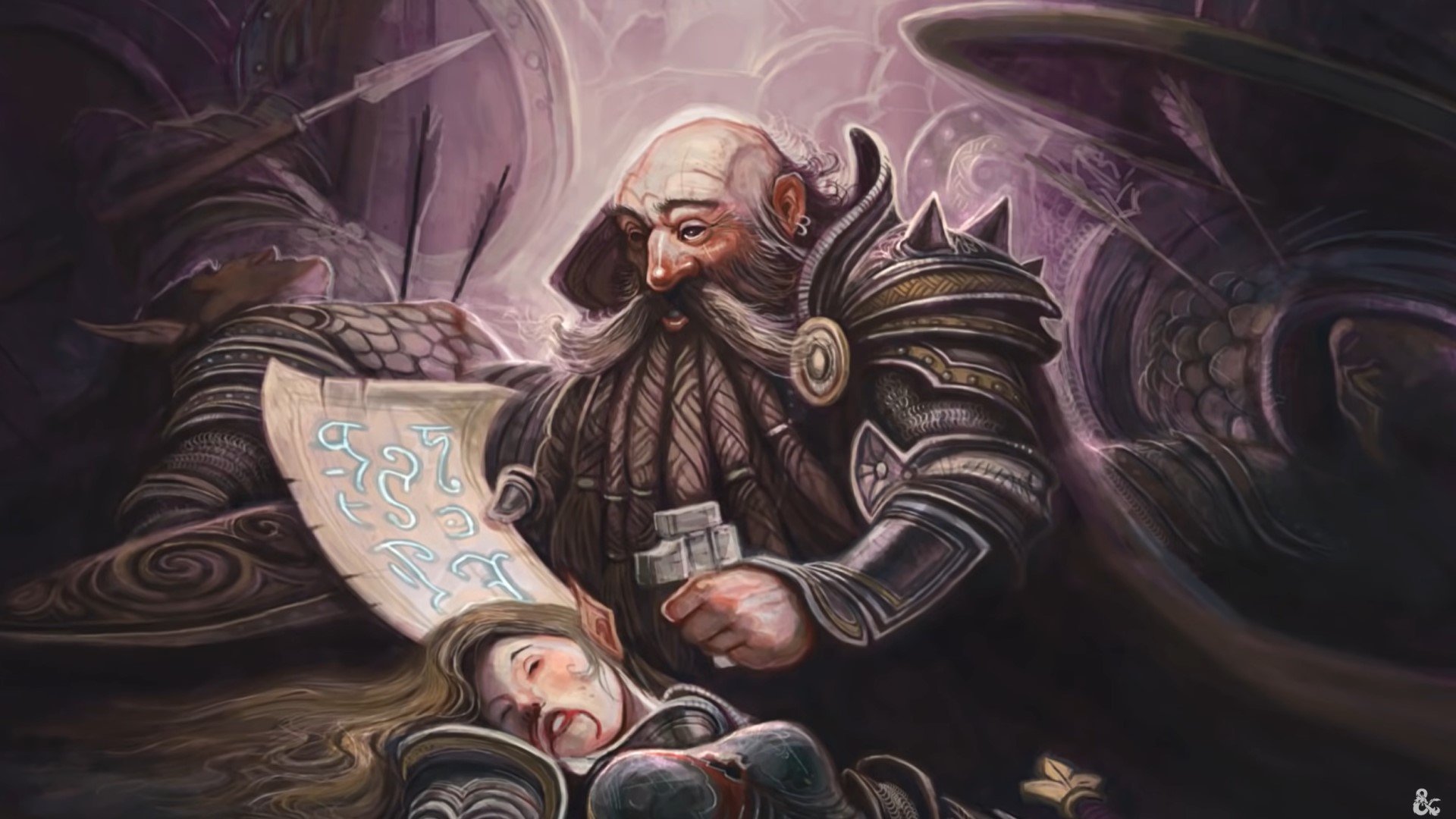
The Light domain has seen significantly more change. Bonus Cantrip and Potent Strikes are out, and there are several different spells in the domain spell list. Warding Flare now has an improved version, and Corona of Light now also benefits Radiance of the Dawn. Plus, the new Revealing Light feature lets you cast See Invisibility for all your friends without a spell slot.
The Trickery domain gets an updated spell list in the playtest, as well as an improved range for Blessing of the Trickster. Invoke Duplicity no longer needs concentration and lets you teleport straight away. Divine Strike has been cut, Improved Duplicity has been overhauled, and the new Trickster’s Magic feature replaces Cloak of Shadows.
Finally, there’s the War Domain. Bonus Proficiencies and Divine Strike are gone, and the spell list has replaced Flame Strike with Destructive Wave. War Priest was adjusted for new weapon mastery rules, and War God’s Blessing and Guided Strike have been redesigned to provide more benefits to allies. Avatar of Battle also now covers magical damage from its chosen damage types.
Find the Cleric playtest materials on D&D Beyond.
Ready to start playing a Cleric? It may help to learn about the monsters who fear you most – the undead. We can teach you all there is to know about the DnD vampire and the zombie 5e, for example.
